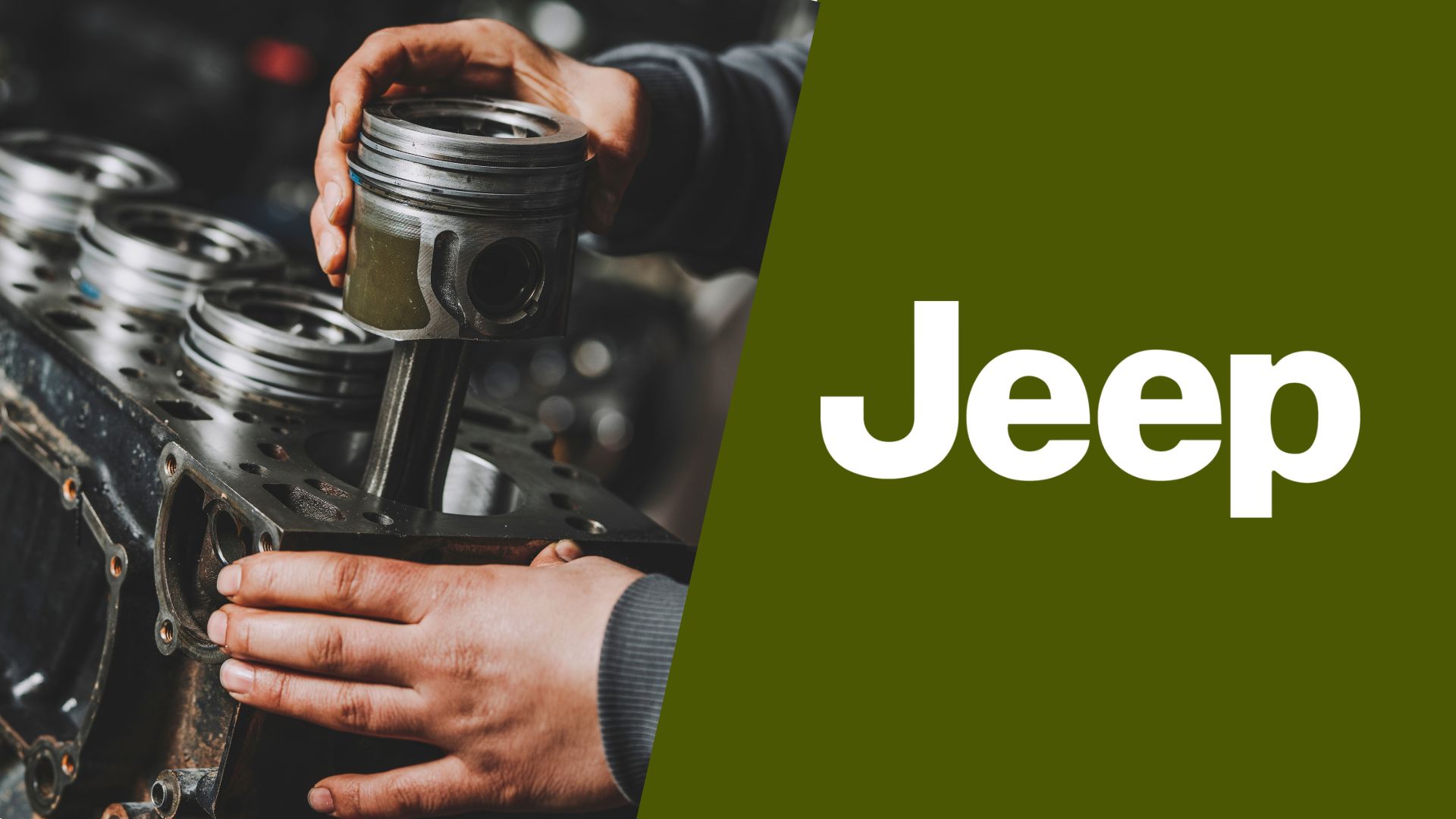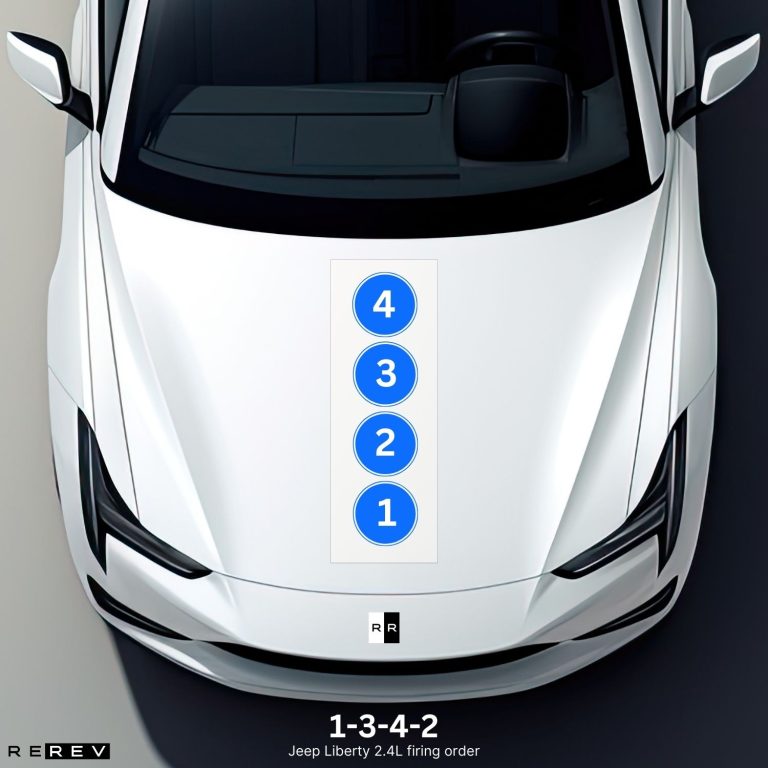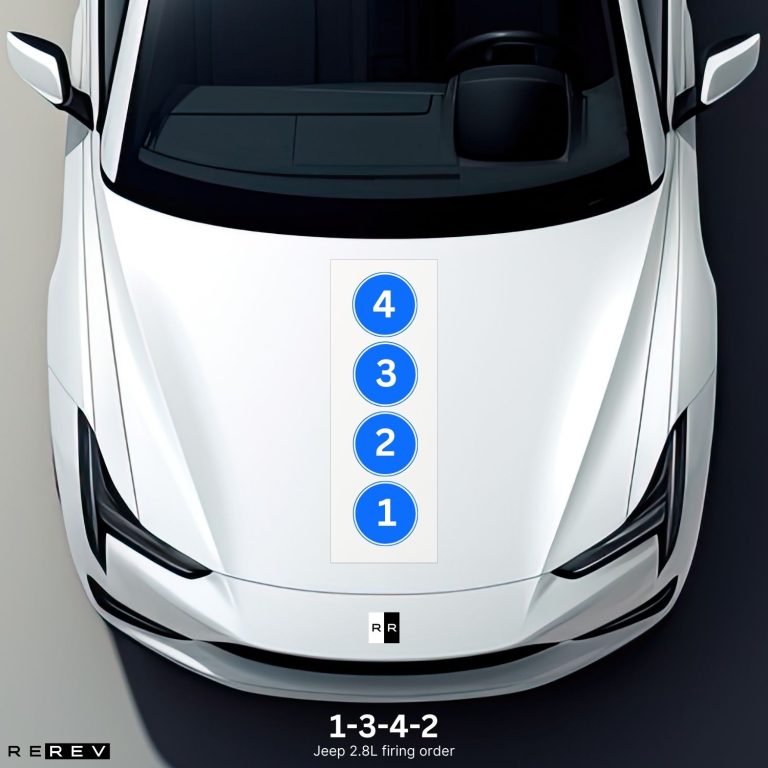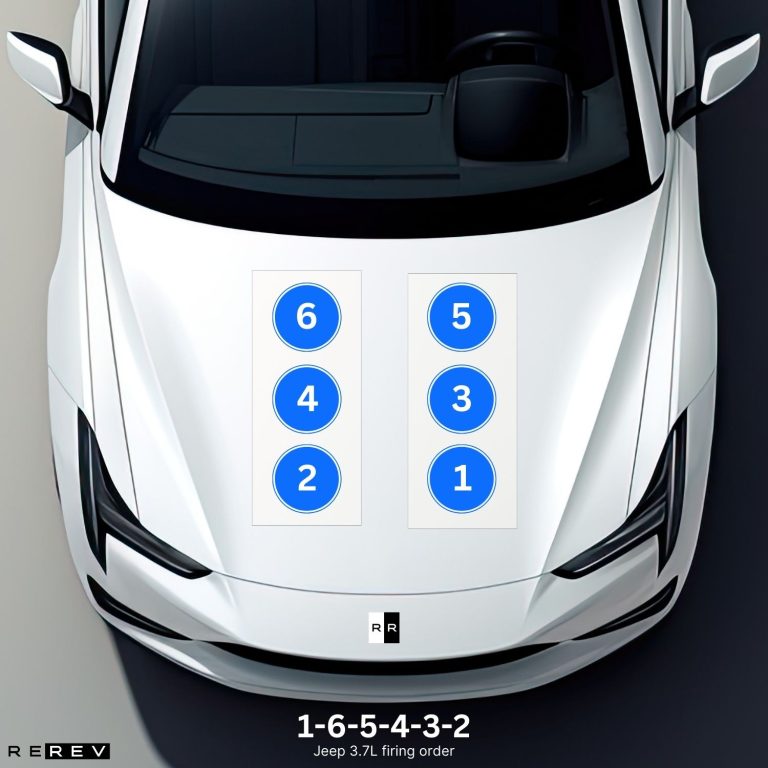Jeep Liberty (2002-2012) firing order — diagram & guide

Jeep Liberty, also known as Cherokee outside the North American market, is a short-lived mid-size SUV by the famous brand. However, even though its production only lasted 10 years, the model proceeded to be one of the most reliable options in this vehicle category.
It’s mostly due to reliable engine options used, so this guide on Jeep Liberty (2002-2012) firing order will help you get the most out of your with proper servicing. You don’t need to be an experienced mechanic for small repairs, but you need to know the firing order and cylinder arrangement and that’s exactly what we’ll explain.
| LIBERTY YEARS | ENGINE | FIRING ORDER |
|---|---|---|
| 1st Gen (2002-2007) | 2.4L I4 | 1-3-4-2 |
| 2.8L Diesel | 1-3-4-2 | |
| 3.7L V6 | 1-6-5-4-3-2 | |
| 2nd Gen (2008-2012) | 2.8L Diesel | 1-3-4-2 |
| 3.7L V6 | 1-6-5-4-3-2 |
First-generation Jeep Liberty (2002-2007) firing order
The first-gen model of the Liberty featured all the basic engine options drivers could ask for – from a base four-cylinder petrol engine to the turbodiesel one and a V6 for higher trims. The firing orders are easy to remember, especially for the two four-cylinder options, but there are also vast differences between them so let’s take a closer look.
Jeep Liberty 2.4L firing order

As a base engine option for this model, the 2.4-liter “Tigershark” engine was added as a powertrain commonly shared between various Jeep models. The Jeep Liberty 2.4L firing order is 1-3-4-2 so it’s a simple straight-four layout with a common firing pattern.
The cylinders go from the first one on the front side of the engine to the fourth one at the back in a straight 1-2-3-4 sequence.
Jeep 2.8L firing order

The 2.8-liter diesel option was added later on during the production years and this one is also a four-cylinder engine. However, being a diesel engine, it doesn’t have spark plugs and the ignition occurs differently so there are no misfires you can treat this way for this particular engine.
Still, the Jeep Liberty 2.8L firing order is 1-3-4-2 and it can be used to diagnose problems with engine stalling, especially during the colder winter period when these engines are known to slowly heat up. The cylinder order is also straight 1 to 4 looking at the engine from front to rear.
Jeep 3.7L firing order

As the final option offered for a first-gen Liberty, the 3.7-liter V6 offers higher towing capacity and more punch than the previous two engines. However, the Jeep Liberty 3.7L firing order is 1-6-5-4-3-2 and that’s important since it’s a unique firing pattern among Jeep’s V6s of that time.
The cylinder arrangement is also pretty rare for this type of engine, having cylinders 1, 3, and 5 laid out front to rear on the driver’s side, with cylinders 2, 4, and 6 on the passenger’s side.
Second-generation Jeep Liberty (2008-2012) firing order
For the second-gen model of the Liberty, Jeep experts didn’t want to experiment too much so they ditched the 2.4-liter base engine and kept the 2.8-liter CRD-i and the petrol V6. Although the petrol V6 was updated for a higher power output in the second generation, it’s still the same engine essentially.
So, the firing order is still 1-3-4-2 for the 2.8-liter second-gen model, and the second-gen Jeep Liberty 3.7L firing order is 1-6-5-4-3-2 just like for the first-gen V6.
Our take
Overall, the sign of this model’s demise was the list of engine options offered for the second-gen Liberty where no new engines were added to the lineup. Even so, it’s been deemed a pretty reliable car and at least you’ll have an easier time figuring out the firing order if you own any of the two models available.
With that in mind, we hope our team was also able to help you out so you can address minor engine issues yourself.